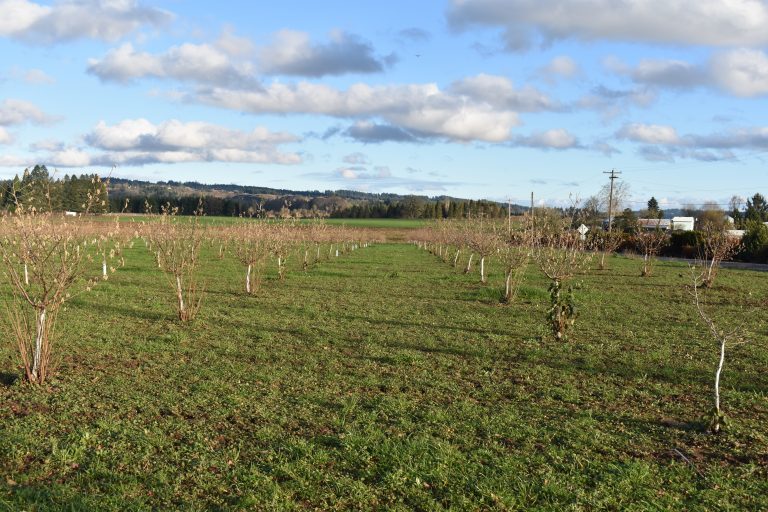Most hazelnut orchards maintain bare grounds to reduce competition between vegetation and the trees. However, this causes soil erosion which reduces soil productivity and pollutes waterways. Cover crops can prevent this issue.

What are cover crops?
Cover crops are temporary vegetation that can be planted in between growing seasons. Some growers choose to plant permanent cover crops in areas that aren’t in production, such as in between crop rows or along field edges.
On hazelnut orchards, cover crops are commonly planted in the fall after harvest and then terminated with herbicide or a flail mower in the spring to prepare for the next hazelnut growing season. Cover crops are usually a variety of grains, grasses, and legumes that are adapted to the climate, and each serve their own purpose.
Keeping plants in the ground all year long can increase water infiltration, add organic matter, break up compaction, and reduce further compaction. Grasses with fibrous root structures help stabilize the soil. Other plants, like legumes, can replenish soil nitrogen and nutrients.

How do cover crops support soil health?
Keeping plants in the ground all year long can increase water infiltration, add organic matter, break up compaction, and reduce further compaction. Grasses with fibrous root structures help stabilize the soil. Other plants, like legumes, can replenish soil nitrogen and nutrients.
Read more at tualatinswcd.org, including:
- How a Washington County farmer uses cover crops in his orchard
- Details about Tualatin SWCD’s Tool Loan Program
